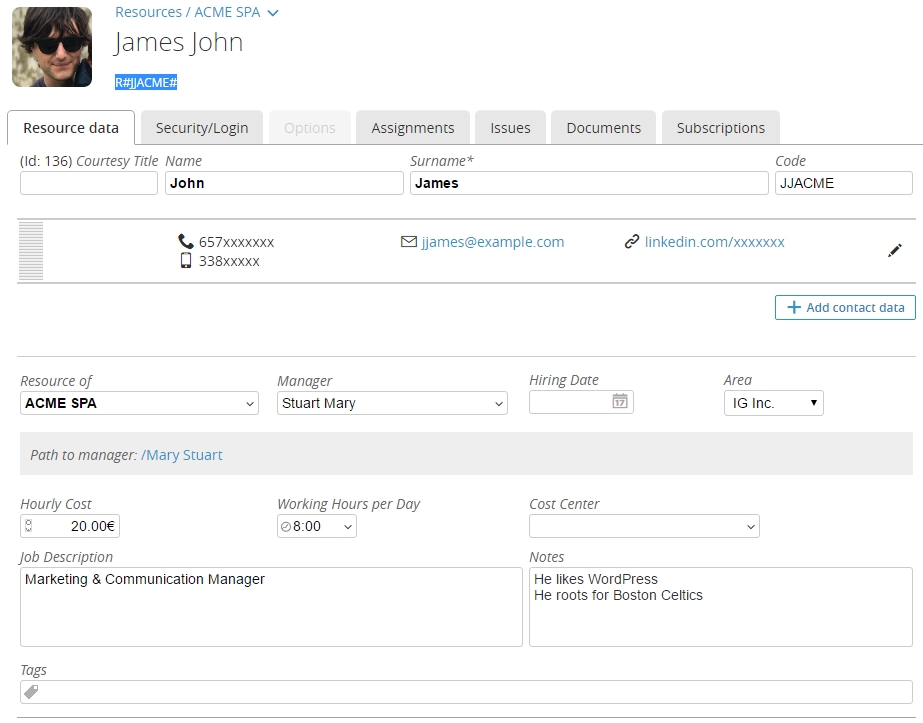Whoever has the arduous task of introducing a new project management tool in a company must always come up against some resistance and try to overcome major obstacles.
In fact, it is commonly known that any procedure changes in the workplace can throw even the most open-minded individuals into turmoil.
But there are some tricks to follow on which your success or failure may depend.
In this article we are going to show you how you might deal with change processes when introducing a new project management software in your company.
Our support to companies in adopting new project management methodologies has already surpassed twenty years of activity, both online and by consulting on site.
So far, we gained enough experience for us to to identify specific patterns of success and failure and we want to share some with you.
During our work as consultants, sometimes adoption succeeded and sometimes failed.
But in general, we think that most of the time success or failure did not depend crucially on the tool itself, but actually depended on the attitude of people involved.
What we are going to show here can be valid for any kind of tool. Either if the tool is a simple shared spreadsheet or even a physical whiteboard on the wall, not necessarily a fully-developed software system.
Our list will begin presenting failure patterns and then we will show some success stories.
In the end, we will give you 10 tips to keep in mind when introducing a new project management methodology in your company.
Failure Patterns

1. Users do not use the new project management tool
In our experience the first cause of failure in the adoption of a new project management tool is not the discovery that the solution chosen does not accomplish a specific task.
It is rather the mere fact that users do not use the tool.
After a while, mangers have to acknowledge that their team is not going to adopt the solution proposed and this is probably the worst scenario.
One way to prevent it is to wonder, right from the beginning, whether is it realistic that people in your team are going to welcome the change.
Some questions you may ask yourself are:
- Am I asking too much?
- Is this solution simple?
- Is it quick?
- Are there visible advantages for the users?
If you consider this from the start, there are better chances that you avoid this pattern.
2. We’ll start using it when everything is in place
Another frequent failure pattern we have noticed is represented by the statement: “We’ll start using it when everything is in place”.
This is what we call a priori failure. In fact, in this case the defeat begins before the adoption of the tool.
In fact, saying that a new methodology will start only when everything is in order, predictably means that you actually never start.
As it is commonly known, perfectionism can be counter-productive.
3. If you don’t get a complete data coverage, what you’ll gain is worthless
A belief that frequently causes failure is that either you get a complete data coverage, or what you will be gaining is worthless.
This means, in short, that partial data is useless.
This is in our experience a big mistake: partial data is way better than no data.
If you start with just a few information, you will always have the chance to increase them during time, heading towards a more and more complete work coverage.
Try it out and let us know if this is true.
4. Software replaces human management
An almost superstitious belief in adopting such tools is that software might replace management.
This is never true, but actually the opposite happens.
A good new project management tool can help you analysing, finding patterns, exploring ongoing situations, improving collaboration.
All of these factors will enforce management instead of replacing it.
5. Migration of past habits into the new project management tool
Yet another mistake originates by hoping to migrate all the current methods in use in the company to the new system.
This often means projecting the bad habits, which can be also determined by the limitations of the tools used in the past, and moving them to the new system.
This mistake makes you miss the great opportunity provided by the introduction of new tools, i.e. the chances of reforming paths, of thinking out what can be changed or removed of old habits.
Most often the company’s greatest advantage is the acceptance of a reformation process, instead of the adoption of the tool itself.
6. Theoretical over practical advantages
One last pattern we want to share with you is this: the tendency to put the advantages of a new project management tool before the relationship between people and new methodologies.
The human factor is in fact what you should actually take into greater consideration, because team cooperation is the key for success.
In this perspective, starting with a small motivated team is more important than all the functionalities of the tool which you will chose in the end.
Success patterns

1. Present the tool differently to different people
The first one is a technique we have seen used in winning situations, which is to present the tool differently to different groups of people.
Even if what you introduce is in some way a centralized formalization of working practices, the nuances in which you show it to different people can make all the difference.
The way you present a software to the IT department must necessarily be different to the way you present it to others, as for example the group of promoters.
By adapting your presentation, your expectations in usage from that group, and the advantages you see in some specific aspects, you will make it easier for different people to understand what will happen once the system is put to work.
Generally speaking, what you need is a collection of data and information, but you do not need to get it in the same way from everyone.
2. Take the opportunity to improve processes
Another thing that successful managers know is that introducing a new solution is an opportunity for opening discussions and not for giving impositions.
Giving the chance to anyone of discussing the way the tool will be introduced may be a way for gaining respect and establishing new communication channels.
Do not forget to grab this opportunity.
In fact, not being asked for opinion is one of the main causes for dissatisfaction in the workplace.
3. Better work quality is an advantage for everyone
A point you should try to make clear in every discussion is that quality at work ends up helping everyone.
This is not just a propaganda slogan but it is the evidence in our experience and probably in anyone’s experience.
Workplaces where the attention to production quality is higher are the places where the life quality of individuals working there is higher.
4. Start simple and proceed one step at a time
Le’s support this point with a short story that happened to us once.
We were proposing our solution to a bank and our contact was smart young manager.
He invited us to a large committee meeting whose agenda was the adoption of our tool.
Every department had its own requirements and especially the IT department asked for some integrations with the existent solutions.
Our client, the young manager, said yes to anyone but after the meeting he actually told us not to do any of these integration and set up the tool as it was.
He started with a small motivated team and used a simplified project management methodology.
After the first group started, another group joined and in the end all the bank adopted this new solution in its simplified version.
His approach has had a great success.
We did some integrations later, but nevertheless he managed to get started quickly and without too many complications.
Tips
And finally, here are our 10 short tips that you should always keep in mind when proposing a new project management technology to your company.
- Start with a small motivated group
- Start simple, avoid useless complications
- Put real data in the new system, right from the beginning
- Poor and scarce information is better than none
- Complete system integration may never happen, still your company may benefit from the new solution adopted
- Do not delay reform while waiting for… [put any strange requirement here]
- Reject bizarre ideas coming from a single user. If this person is the CEO (as it happens most often), answer positively but then postpone actions. At further enquiries answer: “Yes, we are going to do it, but not just now.”
- Do not be mislead by developers and by technical details. Remember what matters in the end is people’s attitude.
- Listen to women. In committees, women’s observations and contributions tend to be more concrete, since they seem to have a more realistic picture of human behaviour at work.
- Remember: it is more a question of people than a question of technology.
Conclusions
The solution that we have been proposing for the last 20 years is a highly complete software: Twproject.
It is a very versatile and flexible software tool which adapts to all ways of working.
Its introduction is therefore very simple and it will further help you to overcome all resistance issues and to pursue the path of success.
This innovative solution covers all project management needs, from the to-do lists for workers, to the overview pages for project managers, to specific reports for board management.
It allows you to start step by step, taking advantage of a portion of the features at the beginning, and refining them over time.
If you want, you can do a free trial, keeping our series of advice in mind, and then you can let us know what you think and if you are going to propose it to your team.






